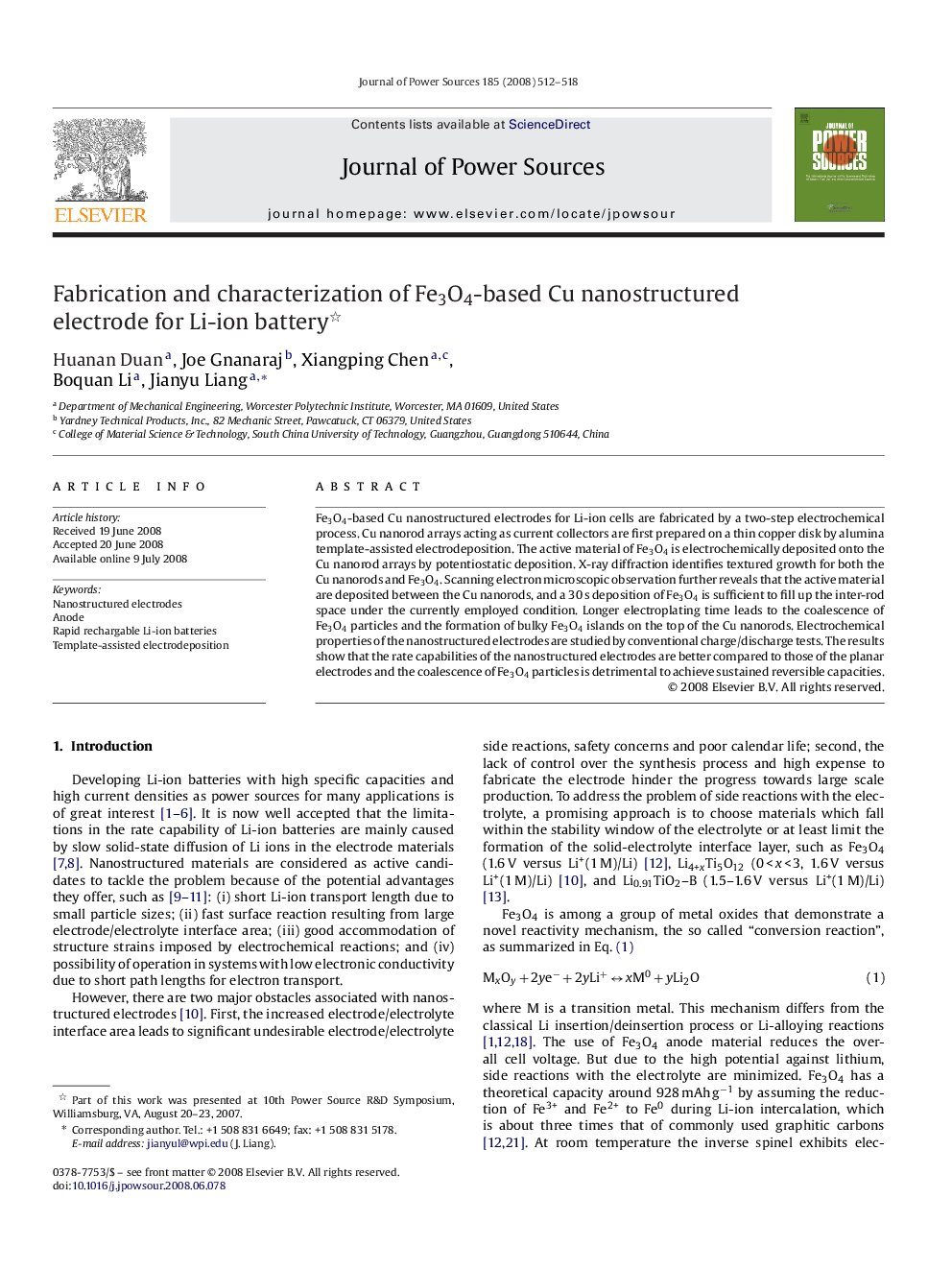| Article ID | Journal | Published Year | Pages | File Type |
|---|---|---|---|---|
| 1294442 | Journal of Power Sources | 2008 | 7 Pages |
Fe3O4-based Cu nanostructured electrodes for Li-ion cells are fabricated by a two-step electrochemical process. Cu nanorod arrays acting as current collectors are first prepared on a thin copper disk by alumina template-assisted electrodeposition. The active material of Fe3O4 is electrochemically deposited onto the Cu nanorod arrays by potentiostatic deposition. X-ray diffraction identifies textured growth for both the Cu nanorods and Fe3O4. Scanning electron microscopic observation further reveals that the active material are deposited between the Cu nanorods, and a 30 s deposition of Fe3O4 is sufficient to fill up the inter-rod space under the currently employed condition. Longer electroplating time leads to the coalescence of Fe3O4 particles and the formation of bulky Fe3O4 islands on the top of the Cu nanorods. Electrochemical properties of the nanostructured electrodes are studied by conventional charge/discharge tests. The results show that the rate capabilities of the nanostructured electrodes are better compared to those of the planar electrodes and the coalescence of Fe3O4 particles is detrimental to achieve sustained reversible capacities.
